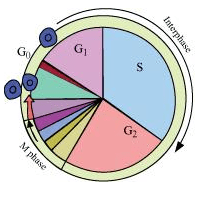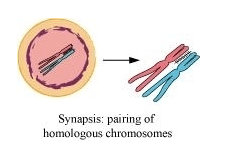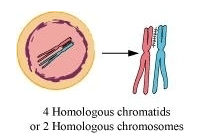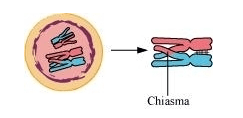
NCERT Solutions for Class 11 Biology chapter 10 Cell Cycle and Cell Division PDF
Hey, are you a class 11 student and looking for ways to download NCERT Solutions for Class 11 Biology chapter 10 Cell Cycle and Cell Division PDF? If yes. Then read this post till the end.In this article, we have listed NCERT Solutions for Class 11 Biology chapter 10 Cell Cycle and Cell Division in PDF that are prepared by Kota’s top Doctor’s Faculties by keeping Simplicity in mind.
If you want to learn and understand class 11 Biology chapter 10 "Cell Cycle and Cell Division" in an easy way then you can use these solutions PDF.
NCERT Solutions helps students to Practice important concepts of subjects easily. Class 11 Biology solutions provide detailed explanations of all the NCERT questions that students can use to clear their doubts instantly.
If you want to score high in your class 11 Biology Exam then it is very important for you to have a good knowledge of all the important topics, so to learn and practice those topics you can use eSaral NCERT Solutions.
In this article, we have listed NCERT Solutions for Class 11 Biology chapter 10 Cell Cycle and Cell Division PDF that you can download to start your preparations anytime.
So, without wasting more time Let’s start.
Download NCERT Solutions for Class 11 Biology chapter 10 Cell Cycle and Cell Division PDF
Question 1: What is the average cell cycle span for a mammalian cell?
Solution. The average cell cycle span for a mammalian cell is approximately 24 hours.
Question 2: Distinguish cytokinesis from karyokinesis.
Solution.

Question 3: Describe the events taking place during interphase.
Solution. Interphase involves a series of changes that prepare a cell for division. It is the period during which the cell experiences growth and DNA replication in an orderly manner. Interphase is divided into three phases.
(i) $G_{1}$ phase
(ii) S phase
(iii) $G_{2}$ phase
$\mathbf{G}_{1}$ phase $-$ It is the stage during which the cell grows and prepares its DNA for replication. In this phase, the cell is metabolically active
S phase $-\mathrm{It}$ is the stage during which DNA synthesis occurs. In this phase, the amount of DNA (per cell) doubles, but the chromosome number remains the same
$\mathbf{G}_{2}$ phase $-$ In this phase, the cell continues to grow and prepares itself for division. The proteins and RNA required for mitosis are synthesised during this stage.

Question 4: What is $\mathrm{G}_{0}$ (quiescent phase) of cell cycle?
Solution. $\mathrm{G}_{0}$ or quiescent phase is the stage wherein cells remain metabolically active, but do not proliferate unless called to do so. Such cells are used for replacing the cells lost during injury.
Question 5: Why is mitosis called equational division?
Solution. Mitosis is the process of cell division wherein the chromosomes replicate and get equally distributed into two daughter cells. The chromosome number in each daughter cell is equal to that in the parent cell, i.e., diploid. Hence, mitosis is known as equational division.
Question 6: Name the stage of cell cycle at which one of the following events occur:
(i) Chromosomes are moved to spindle equator
(ii) Centromere splits and chromatids separate
(iii) Pairing between homologous chromosomes takes place
(iv) Crossing over between homologous chromosomes takes place
Solution. (i) Metaphase
(ii) Anaphase
(iii) Zygotene of meiosis I
(iv) Pachytene of meiosis I
Question 7: Describe the following:
(a) synapsis
(b) bivalent
(c) chiasmata
Draw a diagram to illustrate your answer.
Solution. (a) Synapsis
The pairing of homologous chromosomes is called synapsis. This occurs during the second stage of prophase I or zygotene.

(b) Bivalent
Bivalent or tetrad is a pair of synapsed homologous chromosomes. They are formed during the zygotene stage of prophase I of meiosis.

(c) Chiasmata
Chiasmata is the site where two non-sister chromatids of homologous chromosomes have crossed over. It represents the site of cross-over. It is formed during the diplotene stage of prophase I of meiosis.

Question 8: How does cytokinesis in plant cells differ from that in animal cells?
Solution.

Question $9:$ Find examples where the four daughter cells from meiosis are equal in size and where they are found unequal in size.
Solution. (a) Spermatogenesis or the formation of sperms in human beings occurs by the process of meiosis. It results in the formation of four equal-sized daughter cells
(b) Oogenesis or the formation of ovum in human beings occurs by the process of meiosis. It results in the formation of four daughter cells which are unequal in size.
Question 10: Distinguish anaphase of mitosis from anaphase I of meiosis.
Solution.

Question 11: List the main differences between mitosis and meiosis.
Solution.

Question 12: What is the significance of meiosis?
Solution. Meiosis is the process involving the reduction in the amount of genetic material. It comprises two successive nuclear and cell divisions, with a single cycle of DNA replication. As a result, at the end of meiosis II, four haploid cells are formed.
Significance of meiosis
1. Meiosis maintains the chromosome number from generation to generation. It reduces the chromosome number to half so that the process of fertilisation restores the original number in the zygote.
2. Variations are caused by the cross-over and the random distribution of homologous chromosomes between daughter cells. Variations play an important role in evolution.
3. Chromosomal mutations are brought about by the introduction of certain abnormalities. These chromosomal mutations may be advantageous for an individual.
Question 13: Discuss with your teacher about
(i) haploid insects and lower plants where cell-division occurs, and
(ii) some haploid cells in higher plants where cell-division does not occur.
Solution. Mitotic cell division cannot take place without DNA replication in S phase. Two important events take place during $S$ phase - one is the synthesis or duplication of DNA and the other is the duplication of the centriole. DNA duplication is important as it maintains the chromosome number in the daughter cells. Mitosis is an equational division. Therefore, the duplication of DNA is an important step.
Question 15: Can there be DNA replication without cell division?
Solution. There can be DNA replication without cell division. During cell division, the parent cell gets divided into two daughter cells. However, if there is a repeated replication of DNA without any cell division, then this DNA will keep accumulating inside the cell. This would increase the volume of the cell nucleus, thereby causing cell expansion. An example of DNA duplication without cell division is commonly observed in the alivary glands of Drosophila. The chromosome undergoing repeated DNA duplication is known as polytene chr
Question 16: Analyse the events during every stage of cell cycle and notice how the following two parameters change
(i) Number of chromosomes (N) per cell
(ii) Amount of DNA content (C) per cell
Solution. During meiosis, the number of chromosomes and the amount of DNA in a cell change.
(i) Number of chromosomes (N) per cell
During anaphase I of the meiotic cycle, the homologous chromosomes separate and start moving toward their respective poles. As a result, the bivalents get divided into two sister chromatids and receive half the chromosomes present in the parent cell. Therefore, the number of chromosomes reduces in anaphase $\mathrm{I}$.
(ii) Amount of DNA content (C) per cell
During anaphase II of the meiotic cycle, the chromatids separate as a result of the splitting of the centromere. It is the centromere that holds together the sister chromatids of each chromosome. As a
result, the chromatids move toward their respective poles. Therefore, at each pole, a haploid number of chromosomes and a haploid amount of DNA are present.
During mitosis, the number of chromosomes remains the same. The DNA duplicated in the S phase gets separated in the two daughter cells during anaphase. As a result, the DNA content (C) of the two newlyformed daughter cells remains the same.
Also Read,
Download Class 11 Chemistry Notes Free pdf.
Download Class 11 Biology Book Chapterwise Free pdf.
Download Class 11 Biology Exemplar Chapterwise Free pdf.
If you have any Confusion related to NCERT Solutions for Class 11 Biology chapter 10 Cell Cycle and Cell Division PDF then feel free to ask in the comments section down below.
To watch Free Learning Videos on Class 11 Biology by Kota’s top Doctor’s Faculties Install the eSaral App
